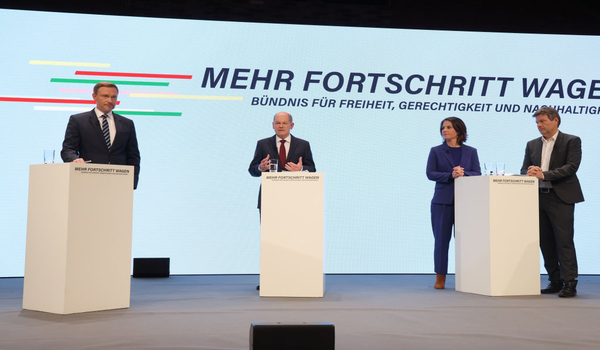Germany’s Coalition Agreement
The three parties planning to form a new federal government in Germany have presented a coalition agreement that is to serve as a pre-agreed policy roadmap for the next four years.
Germany’s Coalition Agreement
Soeren Kern | Gatestone Institute | November 30, 2021
The three parties planning to form a new federal government in Germany have presented a coalition agreement that is to serve as a pre-agreed policy roadmap for the next four years.
The platform for the new government indicates there will be little substantive change from the policies pursued by outgoing Chancellor Angela Merkel.
The lack of bold fresh ideas is the direct consequence of an inconclusive election in September and that the parties seeking to form a new government are ideological rivals that do not agree on almost anything.
Germany’s current finance minister, Olaf Schulz, who narrowly won the general elections on September 26, is expected to be inaugurated as chancellor in the first week of December.
It remains to be seen how long the new government — to be formed by a fractious three-way coalition consisting of the center-left Social Democrats (SPD), the environmentalist Greens and the pro-business Free Democrats (FDP) — will last.
The 178-page coalition agreement, presented in Berlin on November 24, was finalized after two months of haggling (negotiators reportedly spent “hours” debating single sentences). It contains eight main sections that focus on a panoply of domestic and foreign policy issues to be pursued over the next four years.




